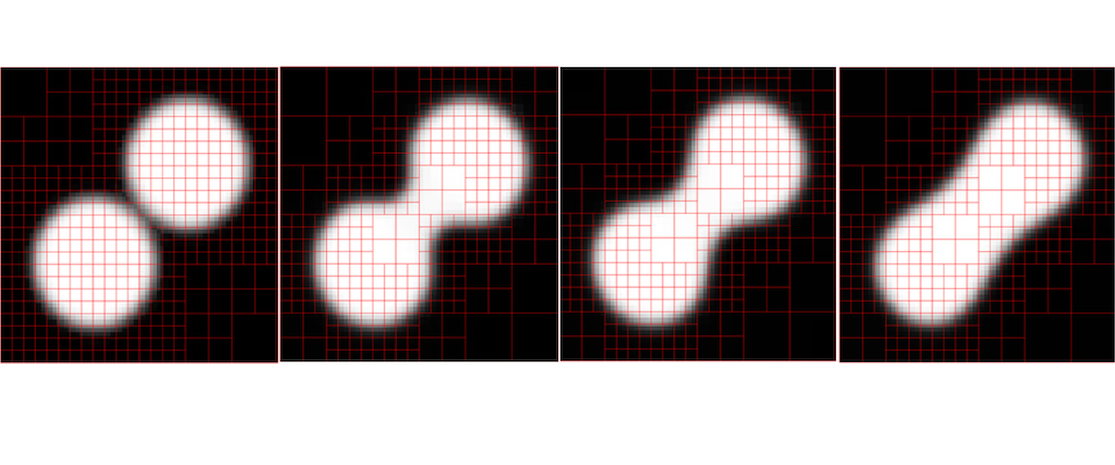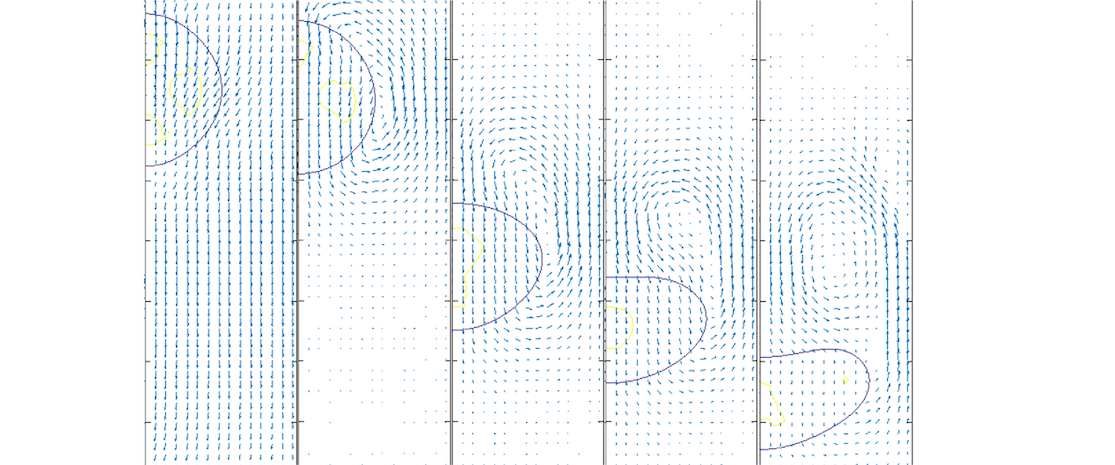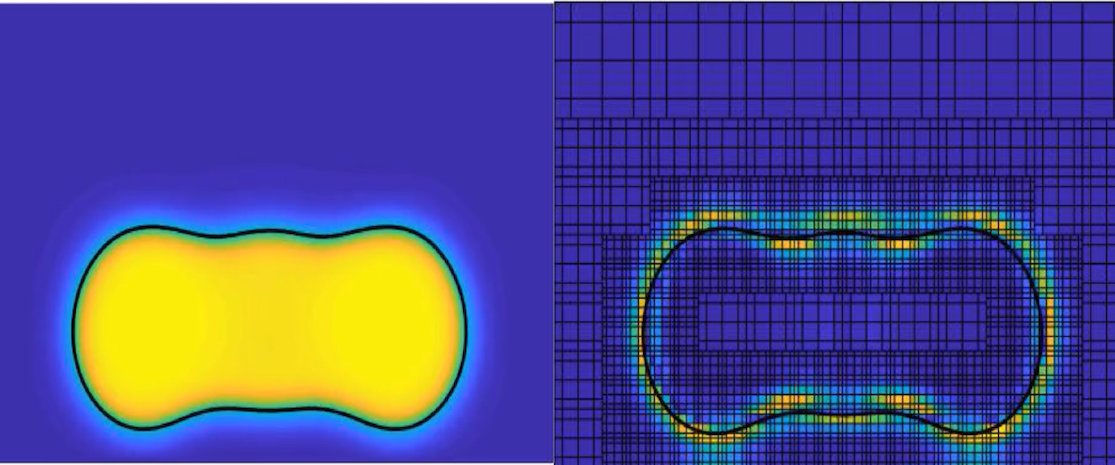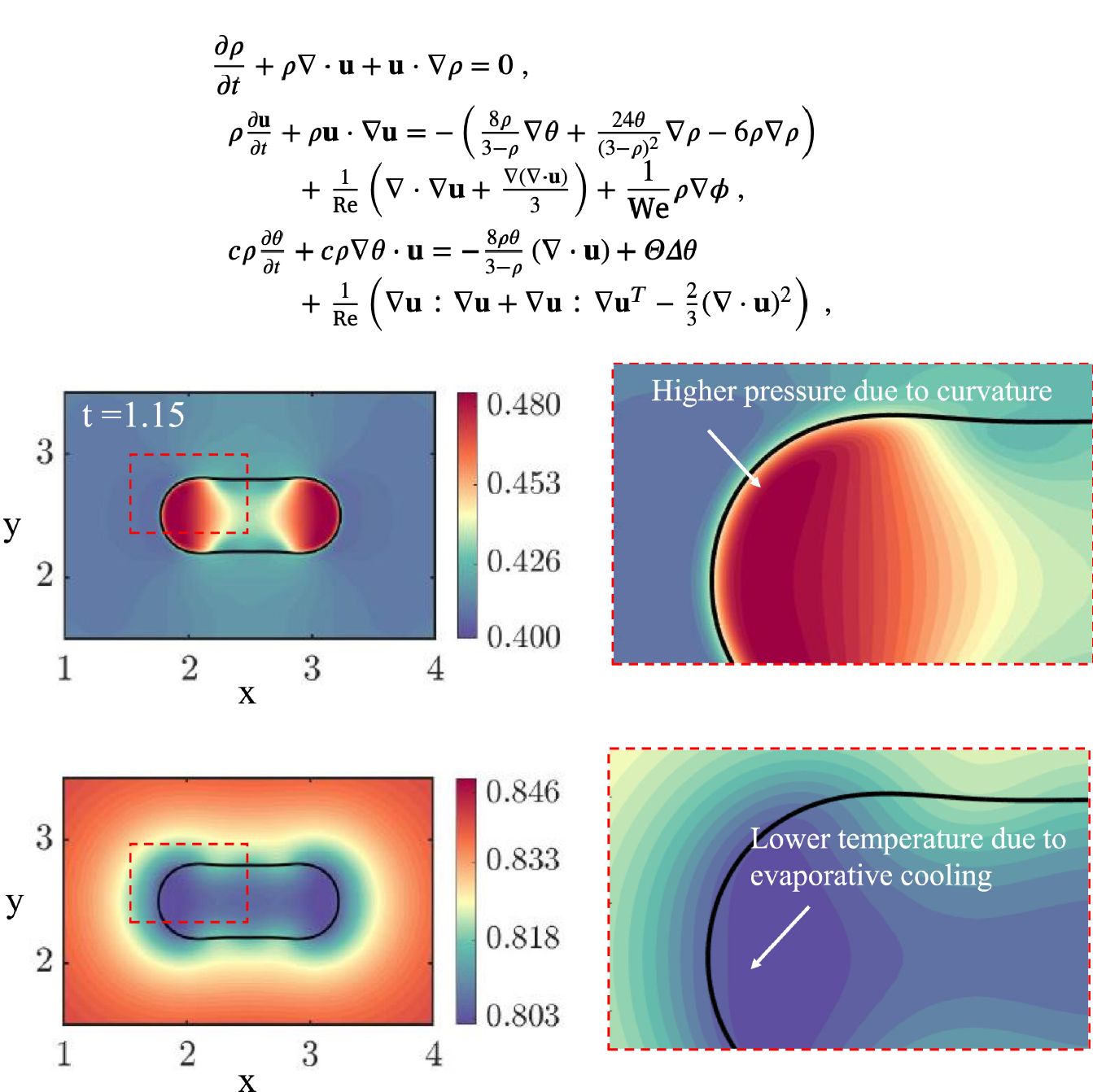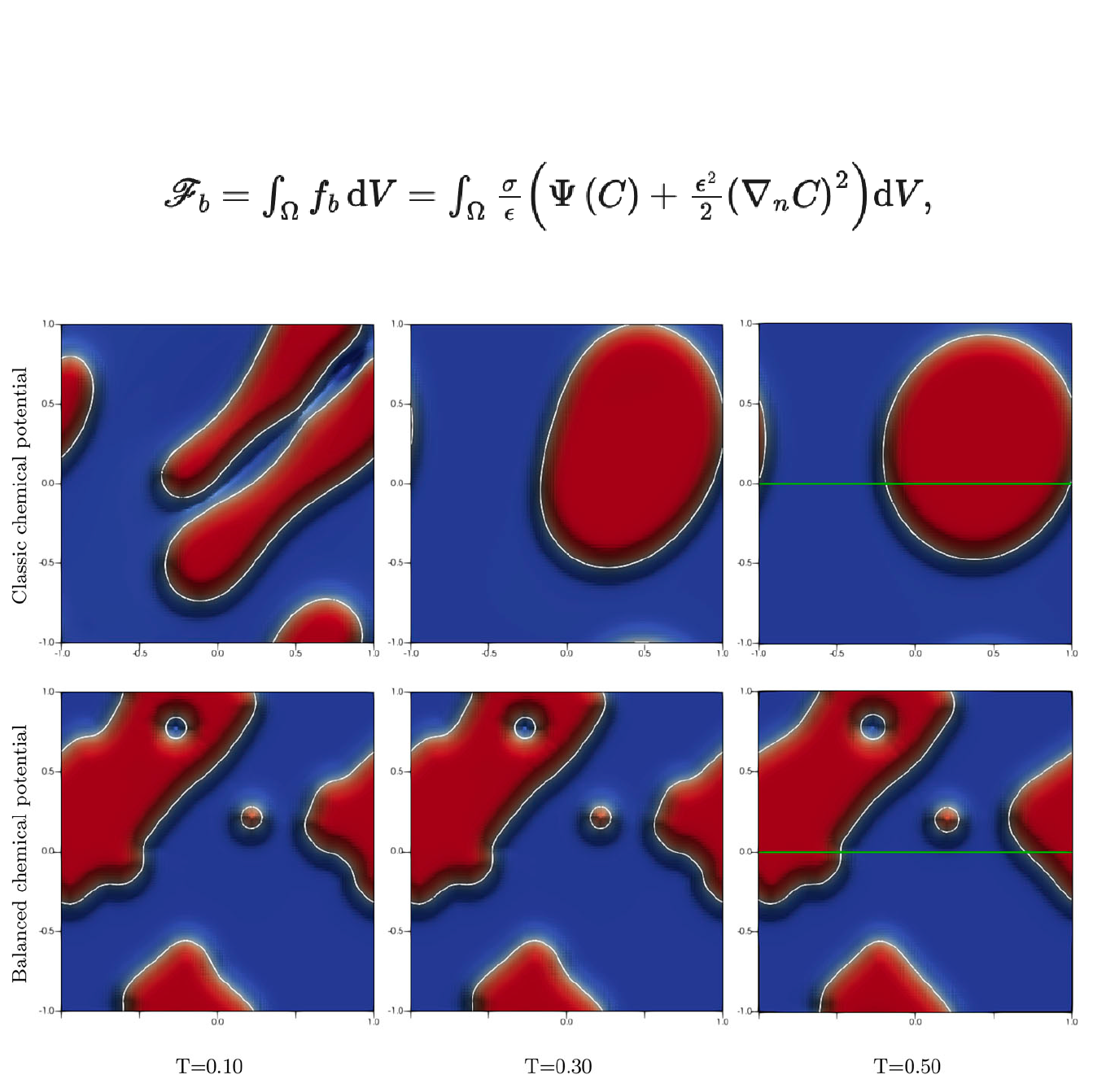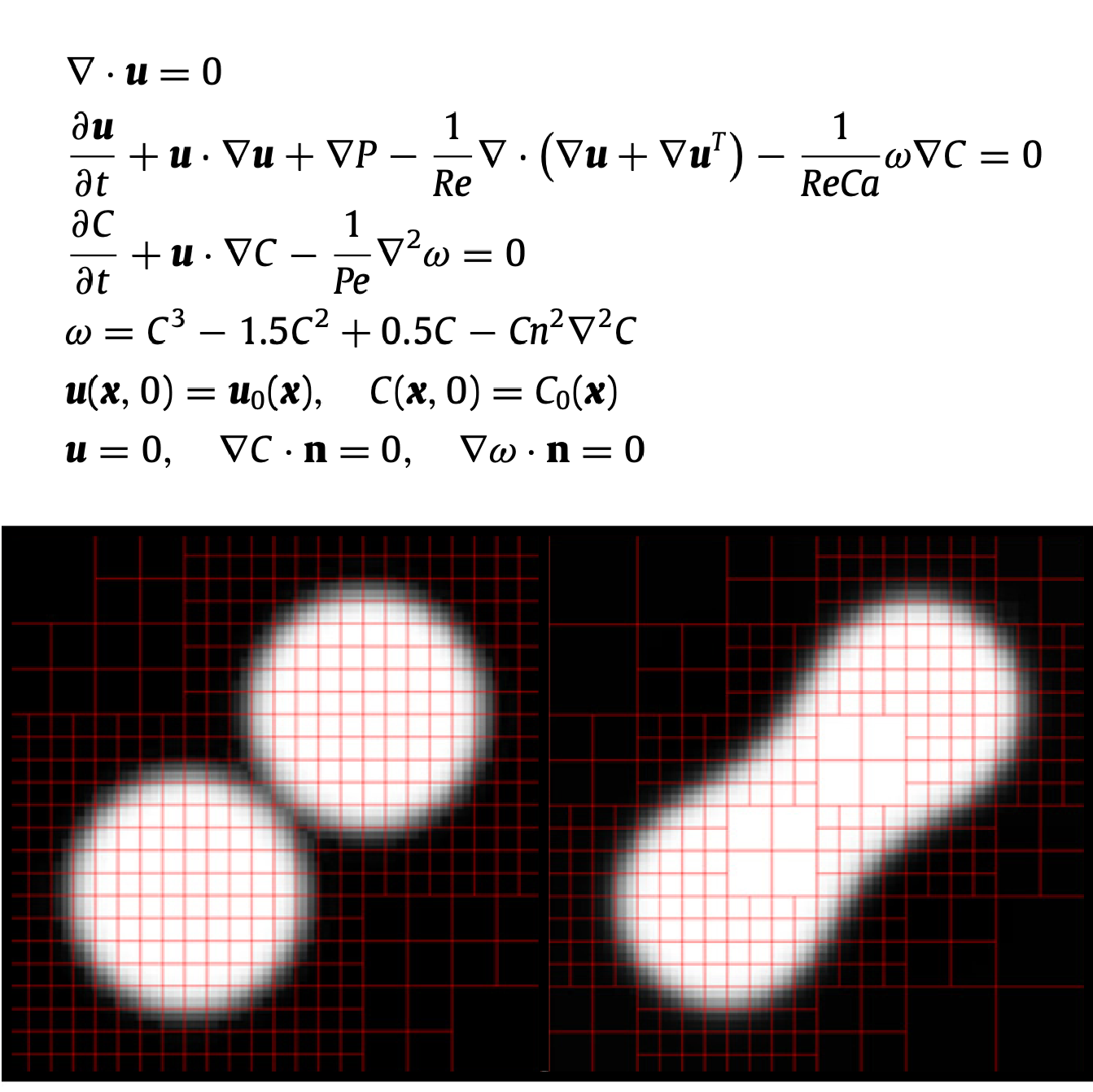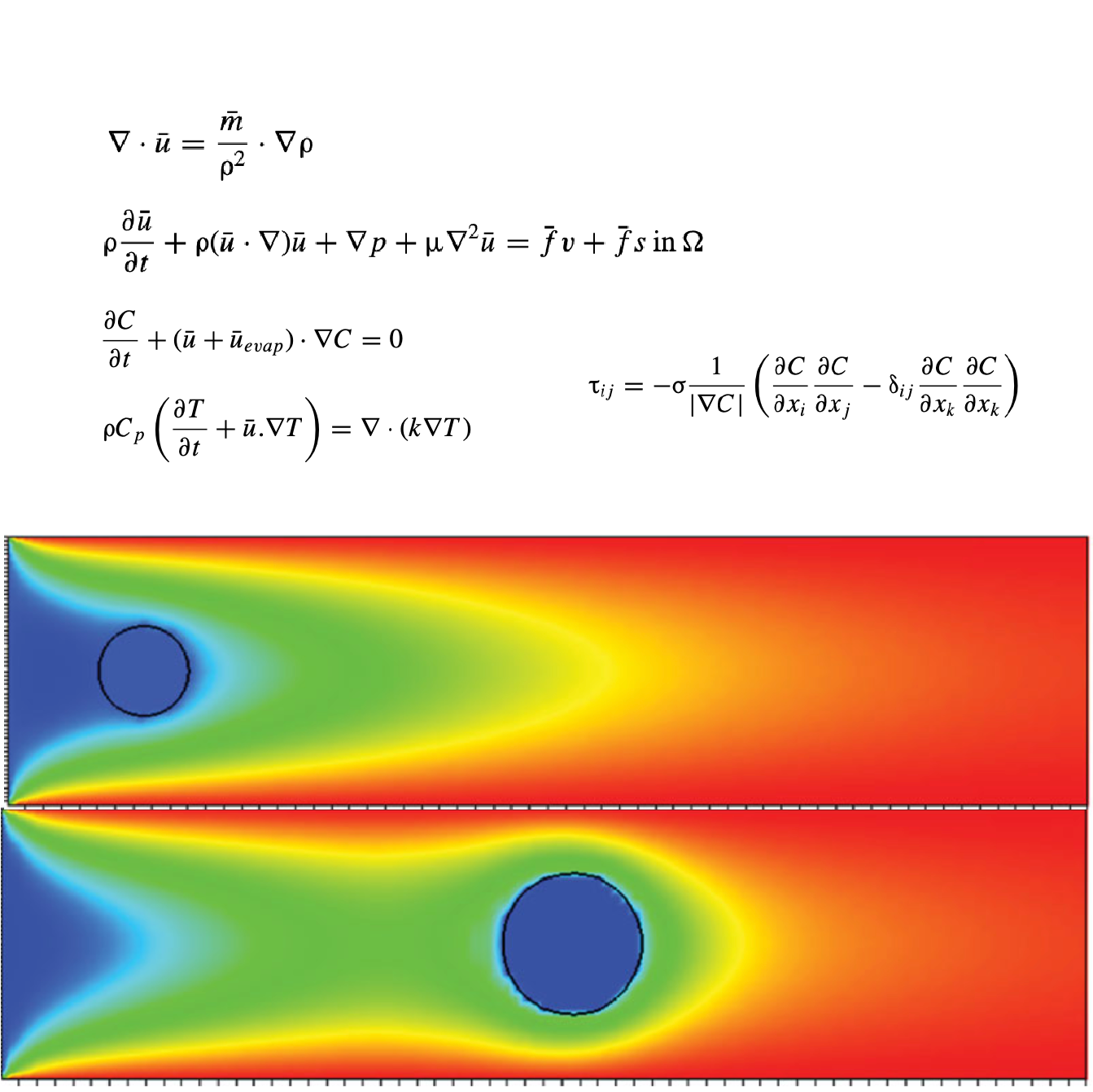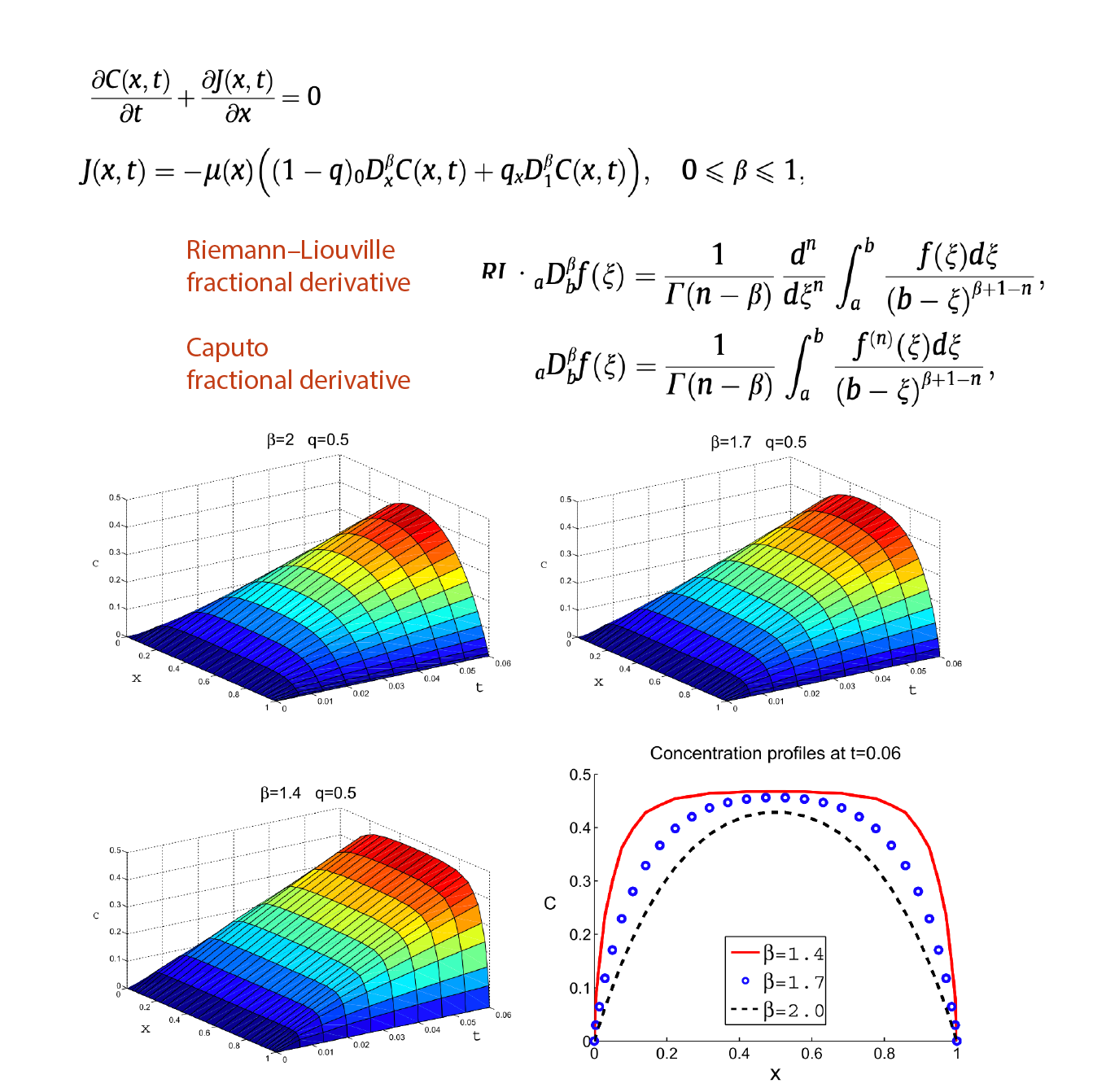Numerical Methods for Interfacial Flows
Numerical simulation of two-phase flows presents challenges such as representation of moving interfaces, fluid properties changing abruptly in a short length scale, surface tension effects difficult to capture numerically and the multiscale problem related to fluid-solid interaction near contact lines. Phase change phenomena such as evaporation and condensation add complexities to the problem. Our research focuses on diffuse interface methods for studying interfacial flows with phase change. In particular, we work with the Navier-Stokes-Korteweg model, which considers the fluid density as the phase-field parameter for identifying the liquid and vapor phases. The model handles compressible two-phase flow dynamics through van der Waals’ gradient theory along with a non-convex equation of state, which endows capillarity effects and phase transformation without ad-hoc assumptions on the gas-liquid interface. With this model we investigate heat and mass transfer processes during evaporation and condensation of droplets, trying to understand how local changes of the interface curvature and local thermodynamic conditions affect the phase change phenomena. The Navier-Stokes-Korteweg model is solved numerically by our in-house Least Squares Spectral Element Method simulation code. The code is a multi-purpose simulation platform including high order C0 Lagrangian interpolant polynomials, and C1 third order Hermite functions extended with bubbles functions. A non-conforming adaptive mesh refinement strategy using mortar elements is used to achieve the necessary resolution at fluid interfaces. The final system is solved by a parallel element-by-element CG or alternative direct solvers.
